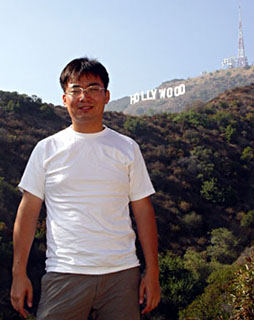|
People

Xiquan Cui
Research Scientist at the Biological Imaging Center (BIC) studying Age-related Macular Degeneration (AMD)
Education
PhD Electrical Engineering, California Institute of Technology, 2009
BS & MS, Optical engineering, Zhejiang University, China,
2003
MS, Physics, Portland State University, USA, 2005
Research Overview
While working in the Biophotonics group, my research was primarily focused on studying how light
behaves and interacts with nano systems, and inventing novel micro/nano
fluidic devices with optical components to further the diagnostic
and measurement techniques in biomedicine.
Biophotonics projects
Compact optofluidic microscope (OFM)
The OFM is an imaging system developed by our group. It
uses a line of nanoapertures on a metal film as a multiple
near-field probe array to collect the near-field optical information
of the cells or micro-organisms flowing in the microfluidic channel.
Because of its near-field detection feature, the OFM has no bulky
lens and can achieve a resolution higher than the diffraction
limit. I helped to develop a new OFM fabrication method
which will make it compatible with current micro-fabrication techniques.
The goal is to integrate the OFM onto microfluidic chips and make
the smallest "camera" in the world.
Nanofluidic Fluorescent Display (NFD)
Based on Daniel Kleppner's "Inhibited Spontaneous
Emission" paper in 1981, we proposed a new type of fluorescent
flat panel display technique, which has the following advantages: no
limit on screen size, fast response, energy economy and low
cost. This display technique is based on controlling the fluorescent
emission of charged fluorophores in nano metal fluidic channels
by a bias voltage. I developed nano metal fluidic channels
which can suppress fluorescent emission in any designed wavelength,
and studied the migrating dynamics of charged fluorophores in
nano metal fluidic by electrophoresis. But this is not just a
simple new display technique. It is a cool technique with which
one can control the so-called "spontaneous" emission
by tuning its environmental vacuum. |